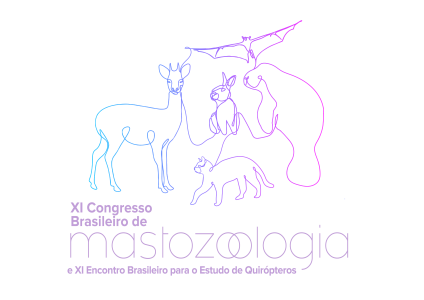Dados do Trabalho
Título:
TARGETING IN MAMMALS AND HITTING IN DUNG-BEETLES
Resumo:
Dung beetles are insects from the Coleoptera Order and its diversity is higher at the tropics and savannahs because of the presence of large mammals which they feed on their feces. Dung beetles are sensitive to forest disturbance and have been widely used as an indicator group related with ecological functions. This study aimed (1) to evaluate whether the abundance of dung beetles differs in terms of phytophysiognomies and functional groups and (2) to evaluate the effects of the vegetation structure, mammal’s biomass and poaching at Vale Natural Reserve, southeastern Brazil. The study was carried out in 2016 in 20 plots established 1km apart in five transects according to the RAPELD methodology and proportionately distributed in the phytophysiognomies. Dung beetles, mammals and vegetation structure were recorded in each plot. Poaching georeferenced records were obtained in the reserve and we measured the distance of the closest poaching record to each plot. The logarithm of dung beetles was used in a non-metric multidimensional scaling (NMDS) to order each plot by its similarity according to composition and abundances, using the Bray-Curtis index. The vegetation structure was reduced with the Principal Component Analysis (PCA). A two-way ANOVA was performed to determine whether there is variation in the abundance of dung beetles among functional groups and phytophysiognomies. We conducted multiple regressions with the first axes of NMDS and the covariates (PCA1, PCA2, mammal biomass and poaching). We collected 13708 individuals of dung beetle from 36 species and recorded 23 species of mammals and total biomass of 146,579kg. The abundance of dung beetles was explained (r2=0.739) both by the functional group (F=7.623, p-0.012) and by the phytophysiognomy (F=66.767, p<0.001). Telecoprids had lower abundances in relation to endo and paracoprids, and a lower abundance of dung beetles was observed in opened area, than in forested areas. The multiple regression model considering all plots were significant (F4,15=33.597; p<0.001) and PCA1, PCA2 and poaching explained a significant part of the variance. Considering only the forested plots, the model was significant (F4,13=3.128; p<0.052), but only mammal biomass explained. Dung beetle assemblage was structured by vegetation when opened and forested areas are considered, since different species occurred in different phytophysiognomies and poaching was different among the areas. When the results are focused only in forested areas, the dung beetle assemblage structure is intimately related to the mammals.
Financiamento:
CNPq, FAPERJ, CAPES, PPBioMA
Área
Ecologia
Autores
Helena Godoy Bergallo, James Aikins, Fabiana Cassar, Átilla Colombo Ferreguetti
